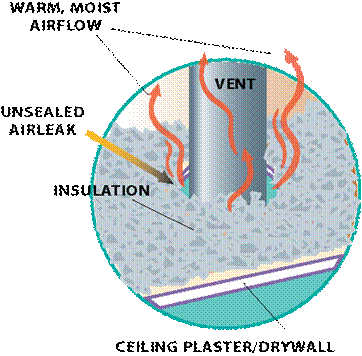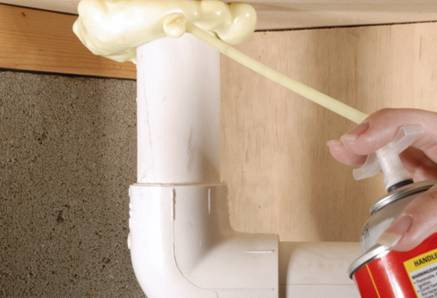How Sealing Air Leaks Contributes to Insulating your Home
Fixing Air Leaks Invading your Home
If you have already insulated your home (or at least most of it), you are probably wondering how is your home losing or gaining heat. Well, what affects your home's thermal performance and efficiency and thus reduces the positive effects of insulation installed are those little things that we usually do not pay attention to. What we do not realize is that these small things can be very problematic and undo all the good that insulation has given your home. The good news is that there is a simple way of dealing with these problems which is also not too costly. We are talking about all the air leaks within and around your home that are letting all the warm air preserved by insulation freely leaving your home. In order of preventing this from happening, we will try to explain just how sealing air leaks contributes to insulating your home.
If you want things done right, there are two basic steps that you have to follow. The first one is detecting and finding air leaks and the other one is sealing them. Another important thing to know is that air leaks most commonly appear at the ceiling level (your loft) and the floor level (your basement), so you should deal with one problem at the time, i.e. seal every air leak that you can find. You can even hire some professional help, but not to worry since this is something that you can do yourself.
Fixing Loft Air Leaks
The first vulnerable area within your home is your ceiling which is probably allowing heat to escape to unheated or unused loft space, thus decreasing the temperature in the rest of your home. In order of determining which gaps and holes are causing problems, start with inspection. You should check both sides, at the ceiling level look for electrical outlets, light fixtures or ceiling fans. Then, go to the loft and look for potential openings from that side, but please note that you will probably have to move or lift up the existing insulation in order of finding and sealing air leaks. Thus, use the opportunity to inspect the insulation and determine whether it needs to be replaced or upgraded (consult applicable Building regulations that determine the minimum loft insulation thickness).

Once you have found all the cutouts, it will not be hard to see that each fixing requires a hole to be cut for the wiring which is most likely what is causing the problem, so what you need to do is seal these small gaps and holes. Here you can use some simple solutions like silicone caulk or some polyurethane foam. The material used is going to depend on the size if the gap. While foam is a better solution for larger holes (such as those around vents or pipes), smaller gaps are better sealed with some caulk (such as those around electrical boxes). Another point worth air sealing and insulating is the loft hatch. If you have not opted for pre-insulated loft hatch, then you will have to use some caulk or foam weatherstripping to close the space between the opening and the loft hatch frame.
When undertaking all the above mentioned actions it is important to take some precautions such as wear protective clothing, ventilate the space, avoid working when it is too hot outside and make sure that you have made your loft safe to walk around.
Sealing Air Leaks in your Basement
Step two in your quest for air sealing and insulation is your floor and basement space. Since vast amount of money is spent on heating and cooling bills, it is important to know that a large amount of heat is lost at the floor level laying on top of your basement and the ground level below your basement. This leads to the basement space getting colder and the gaps in your home construction letting the hot air escape down thus making the interior lose heat.

Here, you should start with basement walls, whereas as aforementioned, you can use low-expanding polyurethane foam for larger cracks and some caulk for smaller ones. The foam will expand in around two hours and fill up the larger hole easily while the excessive material can be easily cut out with a utility knife. Here you can choose from acrylic caulk which is less expensive and is easy to clean off with some water, while silicone caulk is better when you work with nonporous materials. Another important thing to keep in mind is that you will need caulk that resistant to high temperatures when air sealing and insulation around water heater or furnace pipes.
Another area that should be air sealed is at the foundation level where the caulk should be spread along the bottom and top edges of the rim joist and the sill plate and the foundation.
Improve your home insulation with our high-quality insulation products. Call us today, visit our webstore or contact us for assistance by email.

















































































































